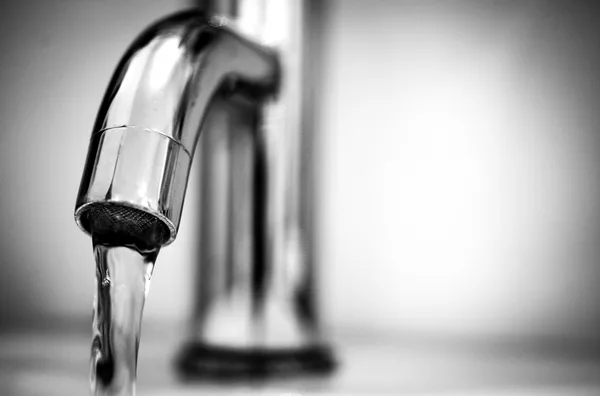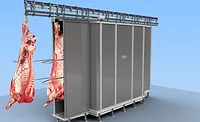Process Water: Going Green Doesn’t Mean Less Safe

In response to water scarcity and a desire to stimulate similar innovation across its businesses, Nestlé S.A., which is headquartered in Vevey, Switzerland, and has operations in 197 countries with 339,000 employees, has expanded its dairy factory in Jalisco, Mexico, transforming it into the company’s first “zero water” manufacturing site in the world, meaning that the plant will not use any local freshwater resources for its operations—including plant cleaning. Over the last 60 years, water availability per person has declined drastically in Mexico due to population growth. Operating in a water-stressed area, it made sense to introduce technology that saves 1.6 million liters of groundwater per day, which is important for the continued well-being of local populations.
The company installed new processes and equipment at the “Cero Agua” (Zero Water) factory, discussed below, which enable it to use recycled water from its dairy operations.
A Fragile Resource
The water resource savings are equivalent to 1.6 million liters, or enough water to meet the average daily consumption of 6,400 people in Mexico.
“In Mexico, and around the world, water is a vital and fragile resource,” says Nestlé CEO Paul Bulcke. “Due to the relevance of water in the production of food and its role in the preservation of life, Nestlé worldwide will continue to pursue initiatives that contribute to the maintenance [of] and access to natural resources.”
The Cero Agua dairy factory takes fresh cow’s milk, normally around 88 percent water, and heats it at low pressure to remove some of its water content. The resulting steam is then condensed and treated and used to clean the evaporating machines themselves.
Once the machines have been flushed out, the water is then collected once more, purified and recycled a second time.
The water can then be reused for watering gardens or cleaning.
Reusing water from the milk in this way removes the need to extract groundwater for operations. The amount of groundwater that the Cero Agua dairy saves each day amounts to roughly 15 percent of the total water used by the company in Mexico each year in its factories, operations and offices.
Such water savings are part of its efforts to promote “conservation, treatment, recycling and water efficiency in our operations and among farmers, suppliers and other partners in our supply chain,” says Marcelo Melchior, who heads Nestlé Mexico.
The Cero Agua project is just one of a number of water-saving initiatives the company has introduced at its factories around the world in recent years.
These have allowed the company to reduce total water withdrawal per ton of product by 37 percent globally over the past 10 years while increasing production.
Worldwide, Nestlé aims to further reduce its water withdrawal per ton of product to achieve an overall reduction of 40 percent by 2015 (see “Nestlé and Water Stewardship Quick Facts”).
Applications at Home and Abroad
Nestlé plans to replicate this approach in other factories globally. For example, it has plans to convert dairy factories in Modesto, CA, and South Africa to zero water.
In the U.S.: In May 2015, Nestlé, which has more than 7,000 employees in California (which includes Nestlé USA, Nestlé Waters North America and Nestlé Purina PetCare), announced that it had invested $7 million in phase I of the Modesto factory. It also unveiled water-saving projects in five water bottling plants and three other facilities in the drought-plagued state.
“The investment is designed to save 144 million gallons of water each year across all of Nestlé’s factories in the state of California,” says Tim Brown, president and CEO of Nestlé Waters North America, which is based in Stamford, CT.
“Nestlé is always looking at conservation in energy savings and packaging and other fronts,” Brown says. “The drought in California pushed water conservation to the top of the list.”
The effort focuses on the water plants—including those operating in Los Angeles, Ontario and Cabazon—as well as ice cream plants in Bakersfield and Tulare, and a milk processing plant in Modesto.
At the factories in Bakersfield and Tulare, savings of more than 26 million gallons (100,000 m3) of water each year have been identified, potentially reducing the plants’ absolute annual withdrawals by 12 percent compared with 2014 levels.
Planned investments this year in conservation measures to reduce the amount of water used in Nestlé Waters’ bottling plants in California are projected to save 55 million gallons of water (208,000 m3) a year, a reduction of nearly 8 percent compared with 2014 levels.
“Technology we have already deployed successfully elsewhere in the world to address the challenges of water scarcity will improve our water-use efficiency, relieving pressure on California’s water resources,” says Jose Lopez, Nestlé’s global head of operations.
Work is underway to transform the Nestlé USA milk factory in Modesto into a zero-water factory, Brown says.
While large gains can be expected from milk and ice cream operations, a methodical approach can yield savings in the production of its bottled water as well. “Savings will be the result of many small actions,” says Brown.
In some cases, it may be a matter of buying a new piece of equipment—or it may mean the purchase of “a new washer or filter.”
This water con-servation effort will focus on two areas: reduction of the amount of water used through the filtration process, and reducing how much water is used in maintaining the hygiene of the water processing plant. “It is important to have a water element for hygiene,” Brown adds.
The company uses 1.3 gallons of water to produce one gallon of bottled water, whereas the industry average is 1.5 gallons to produce a gallon. By comparison, it takes 118 gallons of water to produce less than a gallon of soft drink and 79 gallons of water to produce less than a gallon of beer.
“This is just the beginning of a great number of water conservation activities we will embark on in California,” Brown says.
The recent California groundwater legislation was an acknowledgment that if you want to effectively manage, you need to effectively measure.
The company acknowledges that there is more to do and will continue to strive for high standards and best practices for all its operations. Nestlé is committed to sharing with others what it learns about how technology can make a difference, playing its part in the efforts to make industry more resilient and more resistant to drought conditions.
“We are committed to being a good steward of water resources and to engaging in a thoughtful dialogue—and in meaningful action—to address California’s water challenges,” says Brown.
In South Africa: Nestlé South Africa has a 5-year investment plan to convert the Mossel Bay dairy factory to zero water. The company identified 31 high-priority manufacturing facilities around the world that are located in areas of severe water stress and/or represent a significant portion of its water withdrawals. By the end of 2014, Nestlé had decreased water withdrawals in 42 percent of these facilities since 2013. It is committed to implementing water-saving projects in 100 percent of these high-priority manufacturing facilities globally by 2016. These water-saving projects are designed to deliver a 5 percent improvement in the water consumption performance of each facility compared with 2012 performance levels. Nestlé also uses “Water Target Setting” methodology to identify opportunities to further reduce its water use, as well as the technology needed to achieve this. It’s already helped the company identify ways to reduce water use by 10–30 percent in 80 of the company’s factories worldwide. For example, at a Nestlé factory in the UK, an anaerobic digestion system, which converts solid and liquid sewage waste into clean water and natural gas, has reduced the plant’s water footprint while at the same time cutting the amount of greenhouse gases emitted and reducing solid waste significantly.
Factoring in the True Cost of Water
Water cost factored into the company’s decision making. While the actual costs of the water purchased and off-site treated water are monitored for all of Nestlé’s plants, global water prices are not believed to adequately represent the environmental and social impacts of water use. On the flip side, low water prices prevent the company from adequately valuing the benefits of water-saving projects. When evaluating whether to undertake an investment project to introduce water-saving technology or equipment, Nestlé applies a notional cost of water, ranging from Swiss franc (CHF) 1 to CHF 5 per cubic meter, depending on a factory’s physical risk score. The physical risk score is generated by the Nestlé Combined Water Stress Index. Through this approach, the return on investment is calculated in such a way that the environmental and social impacts are included in the cost/benefit analysis. This is how Nestlé addresses the fact that the payback may be quite long-term (or even nonexistent) when using actual (low) water prices, and also recognizes that water savings deliver different benefits in different locations.
Technological Solutions
Nestlé uses a phased approach to reduce water in its factories.
First, engineers look for ways to optimize the production processes, which include the following:
Reverse Osmosis: This is a process that uses very tight membranes that allow water and small uncharged molecules to pass through but present a barrier to large (e.g., proteins, synthetic chemicals) and ionized (salts) molecules. This technology is used widely in seawater desalination and also now widely used in water reclamation projects, being virtually a total barrier to hazardous substances and pathogenic microorganisms.
Activated Carbon: This material is used to remove odor and taste from water by absorbing organic and certain inorganic compounds.
UV: An ultraviolet lamp is used to deactivate (i.e., kill) bacteria and other microorganisms in water using a very high dose of UV radiation. Its advantage is that it does not alter the chemical characteristics of the water (taste) as chemical disinfectants (e.g., chlorine, chlorine dioxide) do.
Membrane Bioreactor: This process uses microorganisms that degrade water contaminants. The microorganisms are kept in the reactor by an ultrafiltration membrane, which separates the treated water from the microorganisms. This process is well established in the water and wastewater industry. The treated water would usually go through another process (e.g., reverse osmosis) before being reused.
Chlorine Dioxide: This is a chemical disinfectant typically used for potable water.
Remineralization: During reverse osmosis, all the minerals that make the water aggressive (corrode pipes) and taste unpleasant are removed. Minerals are added back in to give the water a pleasant taste and make it less aggressive.
Second, the engineers look for opportunities to reuse the water, for instance, as a coolant in vacuum systems. In the third phase, such as in the zero-water factory, they deploy innovative methods to extract water from raw materials and then recycle it.
“We are focused on how to adapt our bottling and our manufacturing operations, and our supply chain, to make them more resilient and more resistant to drought conditions,” Jose Lopez says. “We will test innovative solutions, prove they are efficient and effective and share what we learn with others.”
Safety Challenges
As complex issues go, there is no silver bullet or single solution to the water challenges the world faces. But there are technologies and practices that can make a difference—and thousands of improvements that can add up to meaningful savings. Consumers trust in the quality and safety of Nestlé goods. It is a promise that the company has made and that consumers can rely on. To make process water potable, company factories treat recycled water until it is 100 percent safe for use. Nestlé strictly monitors the quality and tests the water for chemical and biological contaminants. But testing up- and downstream water quality and treating water on-site are not something new for Nestlé. It already does so at factory sites more than 1,000 times per year. Sometimes, the company also uses recycled water for purposes such as gardening that do not demand the same high level of quality. In such cases, the treatment and testing protocols may be simpler. While recycling water across its supply chain is a challenge, Nestle says it is one the company is used to and can perfectly manage.
In 2013, Nestlé published its Commitments on Water Stewardship, highlighting the importance of water access and conservation. These commitments are to:
• Work to achieve water efficiency across its operations
• Advocate for effective water policies and stewardship
• Effectively treat the water it discharges
• Engage with suppliers, especially those in agriculture
• Raise awareness on water conservation and improve access to water and sanitation
The World Resources Institute is helping Nestlé better understand water risks to the company’s food and bottled water manufacturing operations and identify water stewardship opportunities. Work is also underway to implement the Alliance for Water Stewardship international standard in each of Nestlé’s nine California factories within 2 years.
The standard is a set of rigorous criteria for how water should be managed in a way that is environmentally, socially and economically beneficial.
These efforts represent Nestlé’s long-term commitment to the state of California. Globally, Nestlé has already cut its total water withdrawal in absolute terms by almost one-third over the past 10 years and has publicly committed to do more. It currently has 376 water-saving projects ongoing in its factories worldwide, which are projected to save around 1.84 million cubic meters of water this year.
Making continued strides in conservation will also include improvements in infrastructure. That’s why, in addition to introducing new technologies, the company is meeting with stakeholders, engaging with environmental groups and listening to elected officials so all can come together and improve conditions in local watersheds.
There is also a need for greater transparency as well as comprehensive and balanced oversight of all water users. Nestlé hopes that together, such water savings can become the new norm for all stakeholders.
Barbara VanRenterghem, Ph.D., is the editorial director of Food Safety Magazine. She can be reached at barbara@food-safety.com.
Looking for quick answers on food safety topics?
Try Ask FSM, our new smart AI search tool.
Ask FSM →







